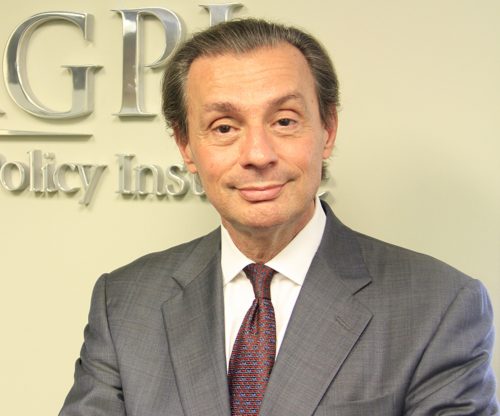Issue Briefs
Innovation Ecosystems
By Paolo von Schirach
October 30, 2024 – What is the magic formula for successful technological innovation? In broad terms, we know. You need a country with a sizable market that can absorb commercially viable innovations, state of the art infrastructure, some great research universities that breed top notch scientists and managers with great new ideas, robust capital markets, availability of risk capital and venture capitalists that can harness it, rule of law and independent courts, zero corruption, enforceable patent laws. We all know that these are the necessary ingredients. However, in practice, nobody really knows what the right mix should be.
Let me explain with an example. Everyone knows about Silicon Valley, a world-famous tech hub located in Northern California. Erroneously, many believe that Silicon Valley is the fruit of a great strategic plan. They assume that brilliant minds gathered near San Francisco and conceived the Big Idea of creating the world’s most important tech hub by attracting skilled talent and new companies.
Well, nothing of this sort ever happened. Not even close. In truth, Silicon Valley came together almost by accident. Forget about strategic plans. Silicon Valley got started for very mundane reasons. Land rich Stanford University after WWII was in serious financial difficulties. It needed money. Hence the idea of leasing some of its land to businesses. The university’s hoped that this way it could raise some revenue.
There is broad agreement that Frederick Terman, a Stanford professor, was behind the almost accidental birth of Silicon Valley. It was Terman who thought about contacting Stanford alumni William “Bill” Hewlett and David Packard. He convinced them to start their electronics company near the Stanford Campus. They agreed. And this is how later, Hewlett-Packard, now universally known as HP was born.
While there was an effort to attract additional tech companies, nobody had any idea that these entities, almost magically, would give life to a unique, self-propelled, ecosystem. An ecosystem that would evolve in impossible to predict directions, giving life to the Silicon Valley phenomenon, a true American tech icon, and the envy of the world.
Thus, the real story of Silicon Valley is the lack of any strategic plans. Silicon Valley is the lucky product of the combination of a variety of components that, via trial and error, in a rather anarchic environment, formed partnerships, attracted talent from everywhere, spawned new companies that sometimes merged with others. This unique environment, overtime, became a powerful magnet for academics, investors, venture capitalists, and bright graduate students who created new start-ups. These various actors, sometimes collaborating, sometimes competing, gave life to Silicon Valley.
Fine. As we know all this, can we “reverse engineer” this phenomenon, so that we can understand the role played by the various components, thus gaining the “recipe” for replicating Silicon Valley? The answer is no. While many have studied the phenomenon, there is no indication that anybody around the world ever managed to replicate it.
A cautionary tale about grand plans leading to major innovation strategies. Some may recall the “Lisbon Strategy” announced in March 2000 by the leaders of the European Union.
The strategy’s goals were to: “Make the EU the world’s most competitive knowledge-based economy, achieve sustainable economic growth, create more and better jobs, and Increase social cohesion.” An overly ambitious agenda.
In November 2004, the former Dutch Prime Minister Win Kok produced an extremely negative interim report on the strategy’s implementation. Main findings: Most of the Lisbon Strategy’s goals were not achieved. The EU and its member states contributed to the slow progress by not acting with enough urgency. Pro innovation strategies were fragmented and weak. The report found “an overloaded agenda, poor coordination and conflicting priorities.”
Here we go. This highly publicized Grand Strategy, with the goal of relaunching the European Union as a world class innovation powerhouse, got almost nowhere.
Elsewhere, Israel gained the nickname of “Start-up Nation.” A small country, facing serious challenges, managed to nurture top talent that produces major innovations in pharmaceuticals, technology, software, and a great deal more. How do explain Israel’s success and the EU failure?
In 2024 Europe is at it again. The EU Commission asked former European Central Bank President Mario Draghi to produce another report. It just came out. It is called “The future of European competitiveness.” I am afraid that this will be another set of clever ideas that will not be implemented.
Innovation needs all the essential prerequisites listed earlier. But more than anything else it needs a special mindset. This is the “secret sauce” that cannot be willed into place by technocrats and bureaucrats.
Legal Disclaimer:
The Global Policy Institute (GPI) publishes this content on an “as-is” basis, without any express or implied warranties of any kind. GPI explicitly disclaims any responsibility or liability for the accuracy, completeness, legality, or reliability of the information, images, videos, or sources referenced in this article. The views expressed are those of the author and do not necessarily reflect the opinions or positions of GPI. Any concerns, copyright issues, or complaints regarding this content should be directed to the author.
 |
Paolo von Schirach is the President of the Global Policy Institute, a Washington DC think tank, and Professor of Political Science and International Relations at Bay Atlantic University, also in Washington, DC. He is also the Editor of the Schirach Report. |